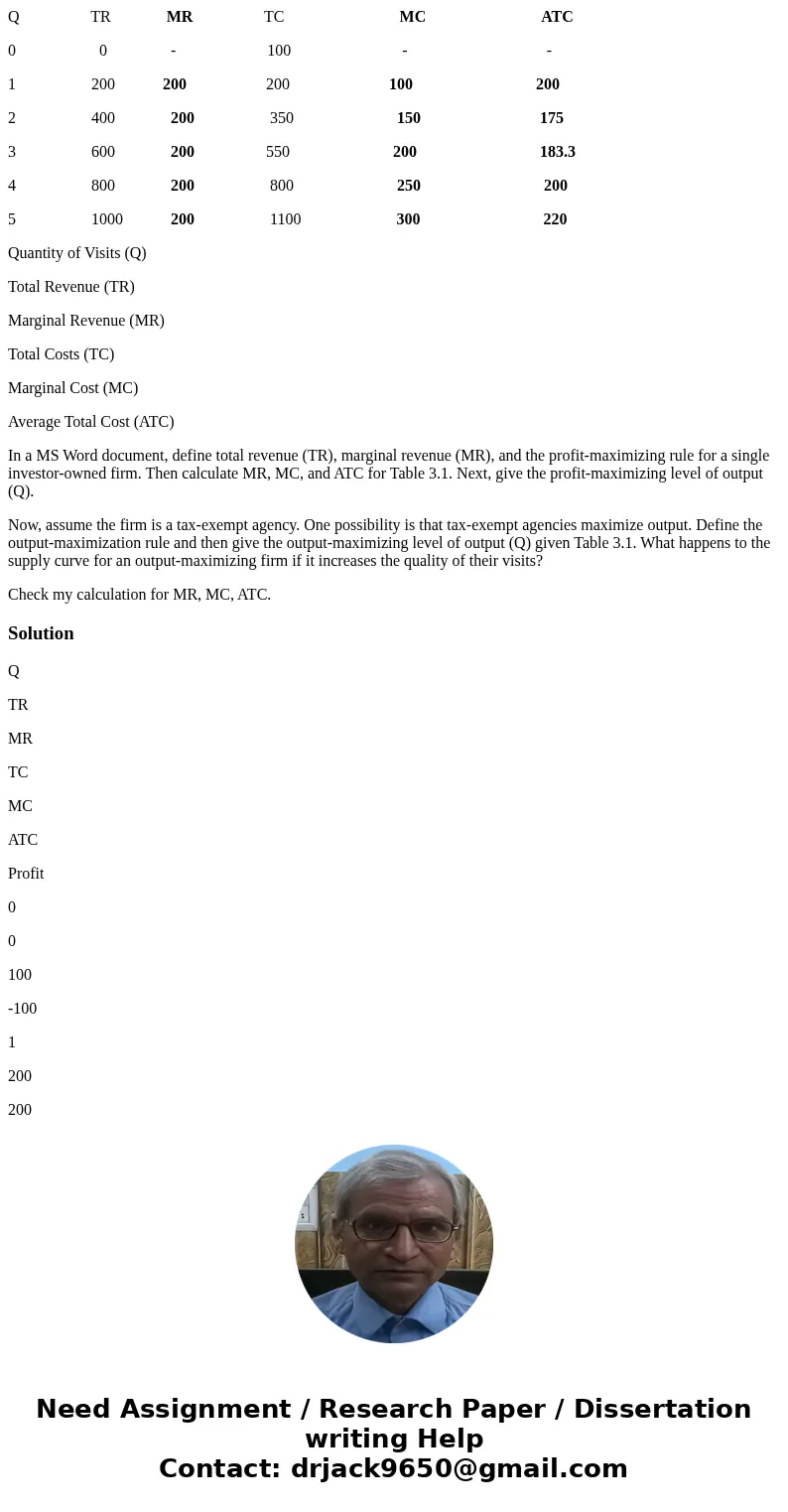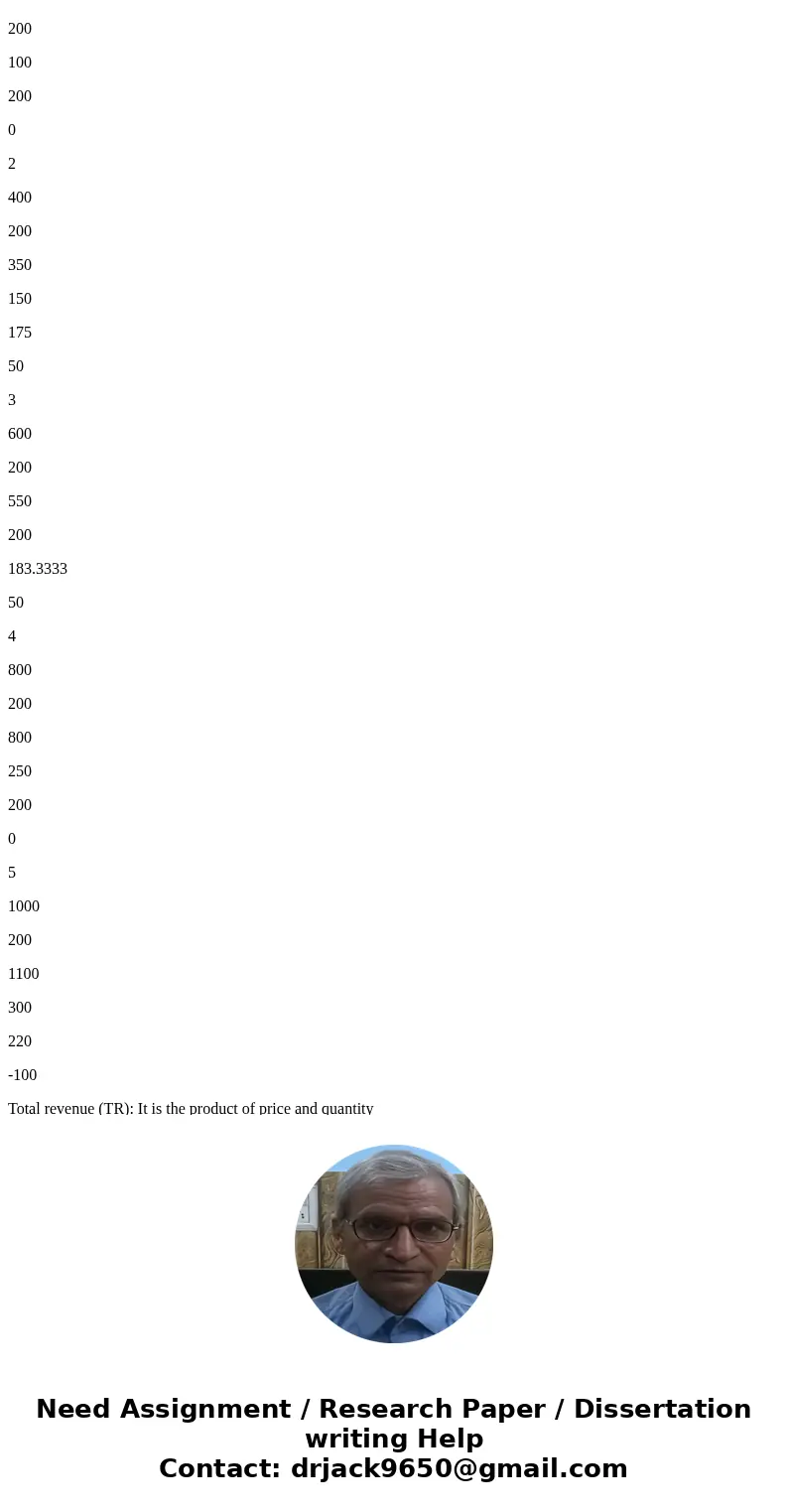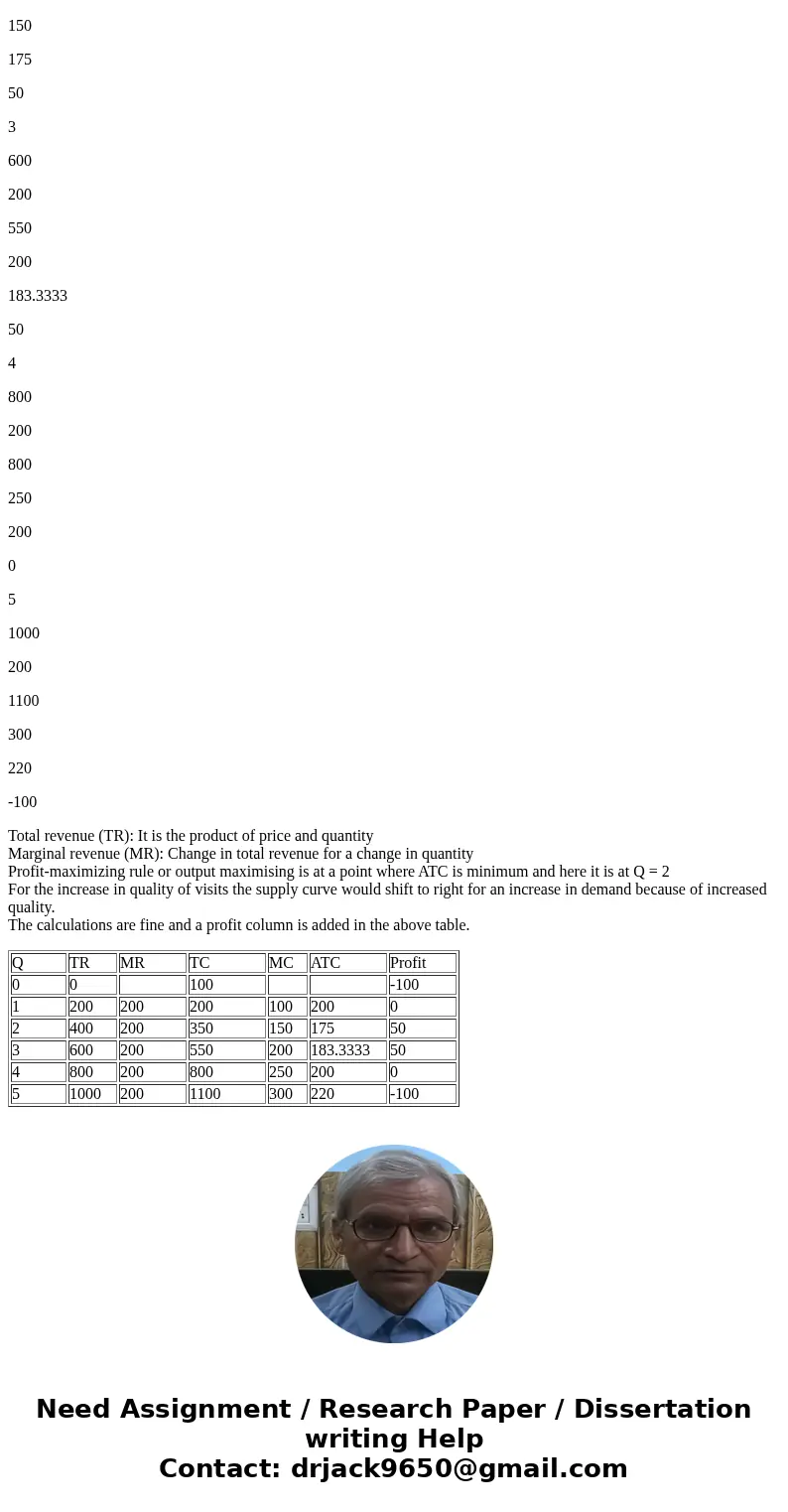Q TR MR TC MC ATC 0 0 100 1 200 200 200 100 200 2 400 200
Q TR MR TC MC ATC
0 0 - 100 - -
1 200 200 200 100 200
2 400 200 350 150 175
3 600 200 550 200 183.3
4 800 200 800 250 200
5 1000 200 1100 300 220
Quantity of Visits (Q)
Total Revenue (TR)
Marginal Revenue (MR)
Total Costs (TC)
Marginal Cost (MC)
Average Total Cost (ATC)
In a MS Word document, define total revenue (TR), marginal revenue (MR), and the profit-maximizing rule for a single investor-owned firm. Then calculate MR, MC, and ATC for Table 3.1. Next, give the profit-maximizing level of output (Q).
Now, assume the firm is a tax-exempt agency. One possibility is that tax-exempt agencies maximize output. Define the output-maximization rule and then give the output-maximizing level of output (Q) given Table 3.1. What happens to the supply curve for an output-maximizing firm if it increases the quality of their visits?
Check my calculation for MR, MC, ATC.
Solution
Q
TR
MR
TC
MC
ATC
Profit
0
0
100
-100
1
200
200
200
100
200
0
2
400
200
350
150
175
50
3
600
200
550
200
183.3333
50
4
800
200
800
250
200
0
5
1000
200
1100
300
220
-100
Total revenue (TR): It is the product of price and quantity
Marginal revenue (MR): Change in total revenue for a change in quantity
Profit-maximizing rule or output maximising is at a point where ATC is minimum and here it is at Q = 2
For the increase in quality of visits the supply curve would shift to right for an increase in demand because of increased quality.
The calculations are fine and a profit column is added in the above table.
| Q | TR | MR | TC | MC | ATC | Profit |
| 0 | 0 | 100 | -100 | |||
| 1 | 200 | 200 | 200 | 100 | 200 | 0 |
| 2 | 400 | 200 | 350 | 150 | 175 | 50 |
| 3 | 600 | 200 | 550 | 200 | 183.3333 | 50 |
| 4 | 800 | 200 | 800 | 250 | 200 | 0 |
| 5 | 1000 | 200 | 1100 | 300 | 220 | -100 |



 Homework Sourse
Homework Sourse